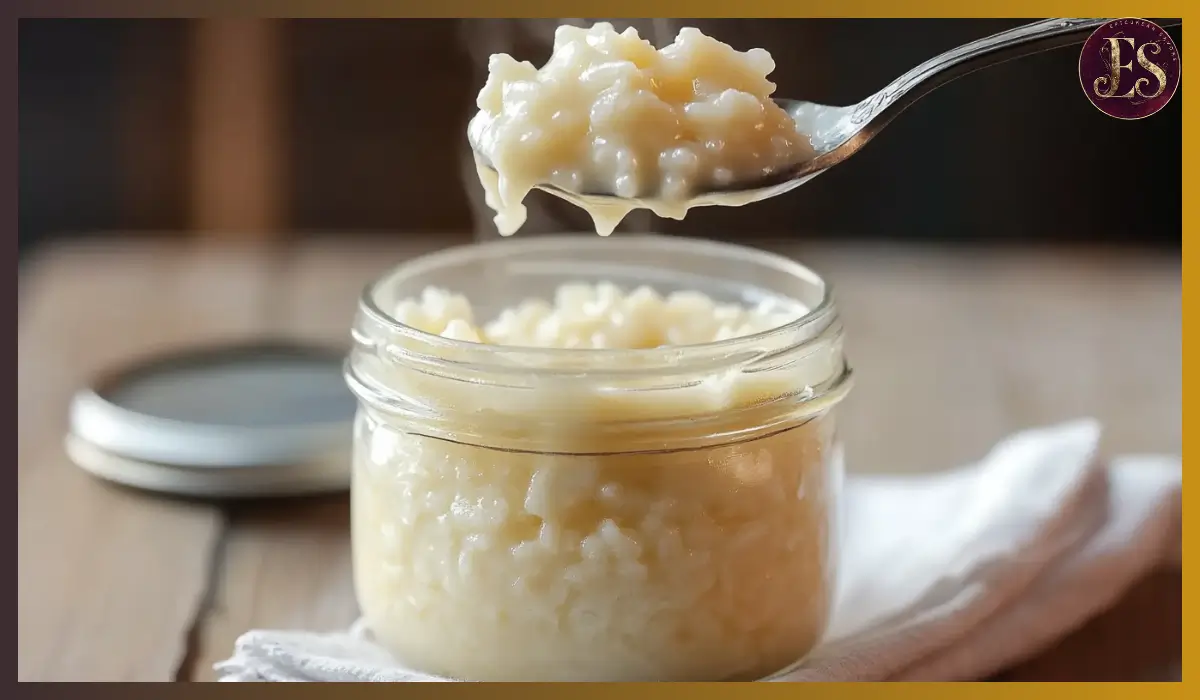There’s something undeniably comforting about a warm, creamy dessert that reminds you of family and tradition. Portuguese Rice Custard, known as Arroz Doce, is exactly that kind of dessert. It’s the kind of dish that instantly transports you to a cozy kitchen where the scent of citrus, vanilla, and cinnamon fills the air. This dessert has been a staple in Portuguese households for generations, often served during Easter, Christmas, and other special occasions. What makes it so special isn’t just the nostalgic flavor but the simple way it brings people together.
I first tasted Arroz Doce in my mother’s kitchen. She had learned to make it from her own mother back in Portugal, and every holiday, she would prepare a big batch that we’d devour after dinner. I still remember sneaking spoonfuls while it cooled on the counter, its creamy texture and delicate lemon aroma impossible to resist. Over time, I began to make it myself, sometimes sticking to the traditional cinnamon topping and other times adding a modern twist with fresh fruit like mango or strawberries.
Whether you’re looking to recreate a family tradition or simply want to try something new, this recipe is accessible, rewarding, and incredibly satisfying. With simple ingredients and easy-to-follow steps, you’ll have a beautiful dish that’s sure to impress. It’s perfect for beginners, and even better when shared with loved ones.
Why You’ll Love This Recipe
There are so many reasons why this Portuguese Rice Custard deserves a spot in your dessert rotation. First and foremost, it’s incredibly easy to make. You don’t need any fancy tools or hard-to-find ingredients. In fact, you probably have most of what you need in your pantry already—rice, milk, sugar, eggs, and a lemon. That’s it.
Secondly, this dessert is the perfect balance of comforting and indulgent. The creaminess of the milk and egg yolks wraps around the soft, tender rice to create a texture that’s almost pudding-like, yet lighter and more refined. The subtle citrus aroma from the lemon peel adds brightness, while the vanilla rounds everything out with its deep, floral notes.
Lastly, there’s something deeply satisfying about making a dessert with cultural roots. Portuguese Rice Custard isn’t just food—it’s heritage. It carries the warmth of shared stories, passed down through generations. Making it is like taking a step back in time while also creating new memories for the future. It’s the kind of recipe you’ll want to make again and again, not just because it tastes amazing, but because it feels like home.
Health Benefits
While Portuguese Rice Custard is definitely a dessert and meant to be enjoyed as a treat, it offers a few surprising health benefits thanks to its wholesome ingredients. Let’s break them down.
First, the base of the dish—jasmine rice—provides a good source of energy through complex carbohydrates. Rice is naturally low in fat and cholesterol-free, and when cooked properly, it’s easy to digest. It also contains small amounts of essential nutrients like B vitamins and magnesium, which support overall metabolic function.
Egg yolks are another ingredient that gets a bad rap, but they’re actually full of nutrition. They’re a great source of vitamins A, D, E, and K, as well as healthy fats and choline—an important nutrient for brain health. The protein in eggs also helps stabilize blood sugar levels, especially when paired with carbohydrates like rice.
So while this isn’t a “health food” per se, it’s made with real, recognizable ingredients that offer more than just empty calories. It’s a wholesome dessert that satisfies your sweet tooth without relying on artificial additives or overly processed components. When enjoyed in moderation, it can be part of a balanced, nourishing diet.
Preparation Time, Servings, and Nutritional Information
This Portuguese Rice Custard is surprisingly quick to pull together considering how decadent and creamy it turns out. From start to finish, you’ll need just a little over an hour, plus some time to let it cool and set.
Total Time:
Prep Time: 10 minutes
Cook Time: 50 minutes
Cooling Time: 4 hours (recommended)
Total: 5 hours (including cooling time)
Servings:
This recipe makes about 6 generous servings.
Nutritional Information (Per Serving):
Calories: 310
Protein: 7g
Carbohydrates: 47g
Fat: 10g
Saturated Fat: 5g
Cholesterol: 110mg
Sodium: 90mg
Fiber: 1g
Sugar: 25g
Ingredients List
Here’s everything you’ll need to make traditional Portuguese Rice Custard. Most ingredients are pantry staples, but the real magic comes from how they’re combined and cooked slowly to develop that creamy texture and comforting flavor.
- 1 cup jasmine rice – Rinsed well to remove excess starch and improve texture. Jasmine rice is preferred for its light floral aroma and soft bite.
- 4 cups water – Filtered or spring water is ideal to keep the flavor clean and pure.
- A pinch of salt – Enhances all the sweet and citrusy notes in the dessert.
- Lemon peel (about 2 inches, no pith) – Adds a bright, aromatic note that balances the richness of the custard.
- 1 cinnamon stick (optional) – A traditional addition during the boiling stage for depth and warmth.
- 3 cups whole milk, divided – This is where the creaminess comes in. Whole milk gives the custard its rich, velvety finish.
- ⅔ cup sugar – Just the right amount of sweetness without being overwhelming.
- 2 egg yolks – For that smooth, custardy consistency. Be sure to separate them carefully.
- 1 teaspoon vanilla extract or 1 vanilla bean – Vanilla complements the lemon beautifully and rounds out the flavors.
- Ground cinnamon (for topping) – A traditional garnish that adds both aroma and visual appeal.
- Optional toppings: Fresh fruit such as sliced mangoes, strawberries, or blueberries for a modern twist.
Step-By-Step Cooking Instructions
Making Portuguese Rice Custard is all about slow cooking and gentle heat. Follow these steps, and you’ll have a creamy, nostalgic dessert ready to impress.
- Rinse the rice:
Begin by rinsing 1 cup of jasmine rice under cold water until the water runs clear. This removes excess starch, helping to create a smooth, non-gluey texture. - Start the base:
In a medium-sized saucepan, bring 4 cups of water to a boil. Add a pinch of salt, a strip of lemon peel (about the size of your thumb), and a cinnamon stick if using. Stir in the rinsed rice. Lower the heat and simmer gently for about 15 minutes, or until the rice is tender and the water is mostly absorbed. Stir occasionally to prevent sticking. - Add the milk:
Slowly pour in 2 cups of whole milk while stirring. Continue to cook the rice on low heat, stirring frequently. This step takes time—about 20 to 25 minutes. The mixture should gradually thicken as the milk is absorbed and the rice becomes extra tender. - Sweeten the custard:
Once the mixture is thick and creamy, add ⅔ cup sugar. Stir until fully dissolved and continue cooking on low for another 5 minutes. - Prepare the egg custard:
In a small bowl, whisk together the remaining 1 cup of milk, 2 egg yolks, and 1 teaspoon of vanilla extract (or scraped vanilla bean). Whisk until smooth. - Temper the eggs:
Before adding the egg mixture to the hot rice, temper the eggs by slowly adding a few spoonfuls of the hot rice mixture to the egg mixture while whisking constantly. This helps prevent the eggs from scrambling. - Incorporate the custard:
Once tempered, pour the egg mixture back into the pot of rice. Stir constantly over very low heat for about 5 minutes. The custard should thicken slightly—do not let it boil. - Remove from heat and cool:
Take the pot off the heat and remove the lemon peel and cinnamon stick. Spoon the custard into individual ramekins or a large serving dish. Smooth the tops with the back of a spoon. - Let it rest:
Allow the custard to cool at room temperature for about 30 minutes, then transfer to the refrigerator to chill for at least 4 hours. It will continue to thicken as it cools. - Top and serve:
Before serving, sprinkle with ground cinnamon in a crisscross pattern for a traditional finish, or top with fresh fruit for a lighter, modern variation.
How to Serve
There are many ways to serve Portuguese Rice Custard, whether you want to honor tradition or add a modern twist.
Serve it chilled for a refreshing dessert, or enjoy it slightly warm for a cozier feel. It works beautifully in individual bowls for a more elegant presentation, or in a larger dish for family-style serving.
Top it with a light dusting of ground cinnamon, either free-form or in the traditional crosshatch pattern. If you’re going for a fresher version, a few slices of mango, strawberries, or a handful of blueberries can add a bright, fruity balance to the richness of the custard.
Pairing Suggestions
This rice custard is delicious on its own, but you can elevate it further with the right pairings. Since it has a rich, creamy profile, you’ll want to contrast that with fresh, light, or crisp elements.
Fruit pairings:
- Sliced mango, kiwi, or fresh strawberries add color and brightness.
- A citrus fruit salad with oranges and mint works beautifully.
- Stewed apples or pears give a warm, comforting pairing during colder months.
Drinks:
- A warm herbal tea, like chamomile or mint, balances the richness nicely.
- Cold milk is a classic and simple choice, especially for kids.
- A caffeine-free iced tea with a hint of lemon complements the citrus notes.
Storage, Freezing & Reheating Instructions
One of the great things about Portuguese Rice Custard is that it stores well, making it perfect for preparing in advance.
Refrigeration:
After the custard has cooled completely, cover it with plastic wrap or transfer it to an airtight container. It will keep in the fridge for up to 3 days. Be sure to store it without toppings, especially fruit, which can become soggy.
Freezing:
While not traditionally frozen, you can freeze this custard if needed. Spoon it into a freezer-safe container and let it cool completely before freezing. It’s best consumed within 1 month. Thaw overnight in the refrigerator and stir gently before serving. The texture may be slightly different, but the flavor will remain intact.
Reheating:
If you prefer your custard warm, gently reheat it in a saucepan over low heat or microwave it in short intervals, stirring in between. Avoid overheating, as this can cause the custard to curdle or dry out.
Common Mistakes to Avoid
Even with a simple dessert like this, a few missteps can affect the final result. Keep these common mistakes in mind to ensure success.
1. Not rinsing the rice:
Skipping this step leads to excess starch, which can make the texture gluey. Rinse thoroughly for a smooth custard.
2. Adding eggs too quickly:
If you pour the egg mixture into the hot rice without tempering, you’ll end up with scrambled eggs. Always temper first and add gradually.
3. Cooking over high heat:
This dessert requires low, gentle heat. High heat can burn the bottom or overcook the eggs.
Pro Tips
To take your Portuguese Rice Custard to the next level, keep these tips in mind.
1. Use fresh lemon peel:
Avoid the bitter white pith. Use a vegetable peeler to get just the zest.
2. Keep the temperature low:
Once the custard mix goes in, never let the pot boil. A slow, gentle simmer ensures smoothness.
3. Stir consistently:
Rice tends to settle and stick. Stirring keeps the mixture from burning and promotes even thickening.
Frequently Asked Questions (FAQs)
Can I use other types of rice?
Yes, but jasmine works best for its soft texture. Arborio rice can also work for a thicker, risotto-like finish.
Is it safe to use raw egg yolks?
Yes, because the mixture is cooked after adding the eggs. Just be sure to keep the temperature low to avoid curdling.
Can I make this dairy-free?
You can use full-fat coconut milk or almond milk, but the texture will be slightly different. Full-fat coconut milk is closest to traditional.
How do I know when it’s thick enough?
The custard should coat the back of a spoon and hold a line when you run your finger through it.
Conclusion & Call to Action
Portuguese Rice Custard is one of those rare desserts that’s as comforting as it is elegant. It’s rooted in tradition, passed down through generations, and made from ingredients that most of us already have on hand. With its creamy texture, warm notes of vanilla and lemon, and subtle sweetness, it’s the kind of dish that lingers in your memory long after the last spoonful.
Whether you’re new to Portuguese cooking or revisiting childhood favorites, this recipe is the perfect way to bring a bit of that soulful, homemade magic into your kitchen. It’s easy to prepare, forgiving to cook, and endlessly versatile. Plus, it makes the kind of dessert you’ll want to share with the people you love.
Now it’s your turn to give it a try. Follow the steps, take your time, and enjoy the process. Once you’ve made it, I’d love to hear how it turned out. Share your experience in the comments or tag me with a photo of your beautiful custard creation. Let’s keep the tradition alive, one creamy bowl at a time.
Print
Portuguese Rice Custard
- Total Time: 5 hours (includes cooling)
- Yield: 6 servings 1x
- Diet: Vegetarian
Description
A creamy, comforting traditional Portuguese dessert made with jasmine rice, whole milk, lemon peel, and vanilla. Perfect for holidays or cozy nights.
Ingredients
-
1 cup jasmine rice (rinsed)
-
4 cups water
-
Pinch of salt
-
Lemon peel (2 inches, no pith)
-
1 cinnamon stick (optional)
-
3 cups whole milk, divided
-
⅔ cup sugar
-
2 egg yolks
-
1 tsp vanilla extract or 1 vanilla bean
-
Ground cinnamon (for topping)
-
Optional: fresh fruit for garnish
Instructions
-
Rinse rice thoroughly.
-
Boil water with lemon peel, cinnamon stick, and salt. Add rice and simmer for 15 minutes.
-
Stir in 2 cups of milk and cook until creamy.
-
Add sugar and continue stirring.
-
In a separate bowl, whisk 1 cup milk, egg yolks, and vanilla.
-
Temper the eggs and stir into rice on low heat.
-
Cook gently for 5 minutes. Remove from heat.
-
Cool and refrigerate for 4 hours.
-
Top with cinnamon or fresh fruit before serving.
Notes
- Stir frequently to prevent sticking.
- Use whole milk for a creamy texture.
- Temper the eggs to avoid scrambling.
- Add fruit or raisins for variation.
- Prep Time: 10 minutes
- Cook Time: 50 minutes
- Category: Dessert
- Method: Stove-top
- Cuisine: Portuguese


